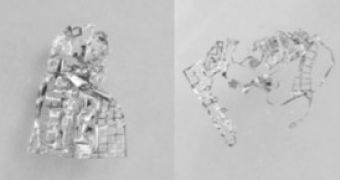The medical field has benefited greatly from the miniaturization of technology, and the breakthroughs in circuitry and semiconductors. That is why some inventions that used to be the subject of science fiction are there no longer.
Among the many other ideas that made their way into Sci Fi book was that of automated wound healing with no need for human direction.
We're still a long way off from healing tanks and cabins though, seeing as how this field has to take baby steps.
One concept has come quite close to reality though: “electroceutical” wound healing.
Basically, the concept theorizes that it should be possible to heal damaged nerves, close wounds and repair stunted bones by means of implantable circuits.
The main problem here is what to do about the circuits after the healing is done. Obviously, taking them out of the body when they're just beneath the skin is simple enough, and could leave little to no scarring, but things get harder when the circuits were used to heal bones.
The solution found by scientists at the University of Illinois was to make it so the circuits dissolve in the body after their purpose is completed.
It's all in concept stage for now, but mechanical engineer John Rogers, one of the researchers, believes the project has a future.
“In each case, the device needs to function only for a time frame set by a healing process. As such, the ideal scenario is for the device to simply disappear afterward,” he told Wired.
Obviously, the circuit would have to be made of 100% biodegradable materials, like magnesium and silk, which are water-soluble and compatible with biological organisms.
The circuits would also need to be remote-controllable via RF (radio frequencies).
The prototypes tested thus far took between a few hours and a few days to dissolve in water. The only pitfall is power. Radio frequencies would have to be used to provide the energy, but it will be tricky to get the antenna size in relation to everything else right.

 14 DAY TRIAL //
14 DAY TRIAL //